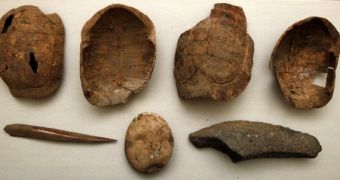The scientific field of archeology will undergo severe make-up sessions and will be fully revitalized through the means of a new grant offered to a team of experts. The new funding received by a group of archaeologists form Brown University and engineers from the National Science Foundation is aimed to change the way archeology is performed and perceived, as well as how its results are accessed and used.
The $2.6 million grant will allow the team of specialists to implement techniques like computer vision and pattern recognition in processes such as conducting archaeological excavation, reconstructing sites and monuments, as well as interpreting results over the next four years. The site that will serve as a testing ground is going to be Apollonia-Arsuf, on Israel's Mediterranean coast, one of the world's 100 most endangered monuments, according to the World Monuments Fund.
The project is set to develop a visual archaeological database (VAD) with the goal of exchanging tediousness for fast access and interactivity. The archaeological site will be surrounded by video cameras and digital scanning stations, ensuring a constant visual track of the excavation. The discovered items can be processed and archived instantly, by providing the VAD with the proper text, video, still images, dense-data 3-D laser scans, and spatial coordinates associated to the finding.
This will enable quick access to the data that can be used for item or scenic reconstruction, replacing the outdated protocol researchers use today. "We use written words to describe our findings when we should be using images and video to make the documentation process more efficient, accurate, and accessible to others," shared main investigator, archaeologist Katharina Galor, cited by Eurekalert.
"The more precisely we can physically reproduce what is left, and the more accurately we can piece together broken and dispersed pieces, the greater our chances of reconstructing and understanding the past truthfully," she added. "These tools will allow unprecedented access to and analysis of past human activity, with geometry providing the capability to recognize, visualize, and evaluate forms of material culture accurately, rapidly and (above all), non-destructively," explained the team.
The algorithms and software development will also address fields like national security, education, entertainment, medical imaging, geometric learning (2-D and 3-D shape theories), database design or remote collaboration.

 14 DAY TRIAL //
14 DAY TRIAL //